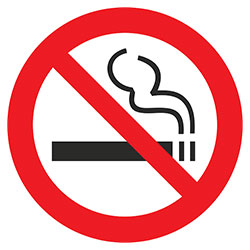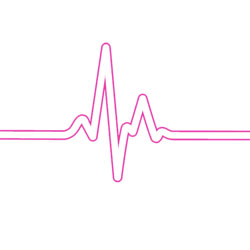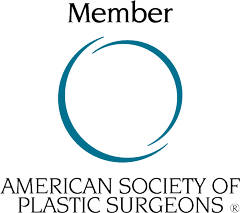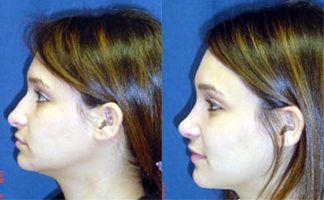What is a Rhinoplasty?
Rhinoplasty, often called a nose job, reshapes the nose to enhance both its appearance and function. For patients who need adjustments only to the nasal tip, tip plasty focuses on refining the tip without altering other parts of the nose.
When patients need functional improvements, such as correcting a deviated septum, alongside cosmetic changes, septorhinoplasty combines both in one procedure. This dual approach not only helps patients achieve a balanced, attractive appearance but also improves breathing.
At our Baltimore facility, we perform all rhinoplasty procedures under monitored IV sedation, and our board-certified anesthesiologists administer the sedation.
For your safety and comfort, your surgery takes place in our state-of-the-art Quad-A surgical center, ensuring a smooth procedure and quicker recovery.
What concerns can rhinoplasty address?
The tip of my nose looks too wide
Rhinoplasty can correct both cosmetic and functional issues with the nose. Patients often seek to improve the following common concerns:
- A nose that appears too large or too small for the face
- Wide or asymmetrical nostrils
- A bulbous or drooping tip
- Bumps or depressions along the bridge
- Crookedness or asymmetry caused by injury or genetics
- Difficulty breathing due to structural issues, such as a deviated septum
Is Rhinoplasty Right for You?
Many people today seek subtle refinements rather than dramatic changes to their nose. Rhinoplasty can help if you're unhappy with specific aspects, such as the tip or overall shape.
For those with functional concerns, such as breathing difficulties, rhinoplasty may be combined with a procedure like septoplasty. This combination not only corrects nasal blockages but also improves airflow, ensuring both aesthetic improvement and restored function.
Whether you want to enhance your facial harmony or restore proper function, rhinoplasty offers a solution tailored to your needs.
How to Communicate Your Rhinoplasty Goals
When discussing your rhinoplasty goals, knowing a few key terms can help you and your surgeon communicate more effectively. Clearly describing specific areas of your nose will help convey the changes you'd like to make.
When Describing the Width of Your Nose:
- Nostril (wide part at the bottom)
- Tip (end of the nose)
- Dorsum (middle part of the nose)
When Describing the Length of Your Nose:
- Root to tip distance (vertical length)
- Projection of the nose (horizontal length outward)
For a more detailed guide, check out our Medical Terms for Nose Surgery video page, where Dr. Rodriguez explains these concepts to help you prepare for your consultation.
How is a Rhinoplasty Performed?
Rhinoplasty reshapes the nose by adjusting the underlying bone and cartilage. This procedure is customized to fit your individual facial structure, ensuring natural, balanced results.
I perform all rhinoplasty procedures under monitored IV sedation in our Quad-A surgical center in Baltimore. This method offers several advantages over general anesthesia. Specifically, it reduces pulmonary risks and allows for quicker recovery. Additionally, it minimizes nausea, contributing to a more comfortable post-operative experience.
What to Expect During the Procedure
- Incisions: Depending on the type of rhinoplasty, I make an incision either inside the nostrils or across the columella (the tissue between the nostrils). This approach provides access to the nasal bones and cartilage.
- Reshaping the Structure: I may realign the nasal bones if they are too wide or crooked. Cartilage can be trimmed or reshaped to refine the tip or correct drooping. If a bump is present on the bridge, I can shave it down for a smoother profile. I also address functional concerns, such as a deviated septum, during the procedure.
- Closing the Incisions: Once reshaping is complete, I close the incisions with sutures. I place external incisions discreetly to minimize visible scarring.
After the procedure, a splint will protect the new structure as it heals. You may also have internal splints or nasal packing for additional support and to help manage swelling.
Rhinoplasty can greatly enhance both appearance and function. By understanding what to expect during the procedure, you will feel more confident and prepared as you move forward with your rhinoplasty journey.
What are the Pre-Op Requirements?

- Quit smoking 3-4 weeks before surgery
- Stop taking multivitamins, herbals, and aspirin 2 weeks before surgery
- Complete a physical exam and CBC within 30 days of surgery
- Fill all post-op prescriptions filled ahead of time
- No food or drink after midnight the night before surgery
What is Rhinoplasty Post-Op recovery like?
Recovering from rhinoplasty may be easier than you expect. Depending on the specifics of your procedure, most patients are able to return to work within 10 to 14 days.
Everyone heals at their own pace, but here's a general timeline of what you can expect during your recovery:
- Rest in bed and drink plenty of fluids for the first 1-2 days after surgery.
- Keep your head elevated for the first week to reduce swelling and support healing.
- Sleep on your back with your head elevated for 2-3 weeks to reduce pressure on the nose.
- Avoid blowing your nose for at least 1 week.
- Wear a splint on your nose for the first week to protect and support the new shape. Internal splints or nasal packing may also be used.
- Splint removal will typically occur at your 7-day post-op appointment.
- Avoid any trauma or pressure to the nose during the first few weeks.
- Expect bruising and swelling for the first 1-2 weeks
- Post-op appointments: 1 week, 1 month, 4 months
What are the risks and possible complications?

- Infection
- Loss of sensation
- Pain and swelling
- Asymmetry or unsatisfactory appearance
- Possibility of revision surgery
How much does Rhinoplasty cost?
Rhinoplasty prices for 2025 are as follows:
| Nose surgery | 2025 Price |
|---|---|
| Full rhinoplasty | $9,000 |
| Tip rhinoplasty | $6,500 |
Prices include surgeon's fee, OR fee, anesthesia, and all follow-up visits.
Can Rhinoplasty Be Covered by Insurance?
If your nose was damaged in an accident, insurance may cover part of the cost to restore its appearance. However, if the surgery is solely for cosmetic reasons, it is considered elective, meaning you’ll need to cover the full cost.
Can I finance my Rhinoplasty surgery?
Yes, financing options are available to help manage the cost of your rhinoplasty. Call us at 410-404-8100 or see our financing page for more information.
Ready to explore what's possible? I invite you to schedule a personal consultation, where we can talk about your goals, answer your questions, and create a plan that's uniquely yours.
Schedule Your Consultation Today!
Together, we'll find the perfect approach to help you look and feel your best.

Board Certified Plastic Surgery, ASPS Member
NOTICE
Patients depicted in our before and after galleries have provided their written consent to display their photos online. Every patient is unique, and surgical results may vary. Please contact us if you have any questions.

